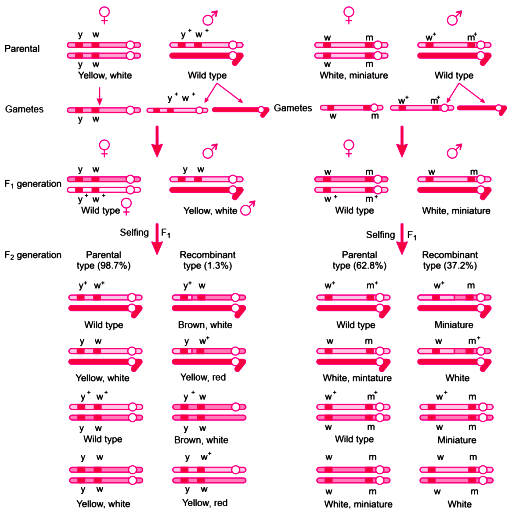Linkage and Recombination
▪ T. H. Morgan carried out several dihybrid crosses in Drosophila to study the genes that are sex-linked. He observed that when the two genes in a dihybrid cross are located on the same chromosome, the proportion of parental gene combinations in the progeny was much higher than the non-parental or recombination of genes.
▪ Morgan and his group found that when genes are grouped on the same chromosome, some genes are tightly linked or associated and show little recombination.

▪ Results of two dihybrid crosses conducted by Morgan. Cross A shows crossing between genes y and w; Cross B shows crossing between genes w and m. Here dominant wild type alleles are represented with (+) sign in superscript.
▪ When the genes are loosely linked they show higher percentage of recombination.
▪ Morgan hybridised yellow bodied and white eyed females with brown bodied and red eyed males (wild type) (cross-A) and inter-crossed their F1 progeny.
▪ Alfred Sturtevant determined that genes of Drosophila are arranged in a linear order. He measured the distance between genes and prepared chromosome maps with the position of genes on the chromosomes based on percentage of recombinants. These are also called genetic maps.